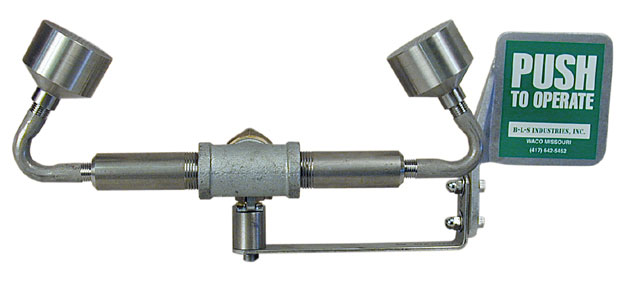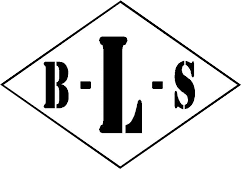How to Use an Eyewash Station Properly: A Simple Guide to Protecting Vision in Emergencies

Workplace safety is never something to take for granted, especially in environments where employees are exposed to hazardous chemicals, airborne contaminants, or mechanical debris. In fact, one of the most common workplace injuries involves damage to the eyes. That’s why knowing how to use an eyewash station properly is critical. Eyewash stations are not only a compliance requirement under OSHA and ANSI standards but also a lifeline in the event of an emergency.
Why Eyewash Stations Are Critical in the Workplace
The human eye is incredibly sensitive. A single splash of corrosive liquid, a cloud of dust, or a stray shard of metal can cause serious, sometimes permanent, injury in seconds. Safety glasses and goggles provide the first line of defense, but they’re not foolproof. Accidents still happen, and when they do, the availability of an eyewash station can make the difference between full recovery and permanent vision loss.
According to the CDC, thousands of workers suffer eye injuries every year, with many requiring medical attention. Eyewash stations are designed to minimize harm by providing immediate flushing of the eyes with clean water or a sterile solution, helping to dilute and wash away hazardous substances before they can cause irreversible damage.
Types of Eyewash Stations
Not all eyewash stations are the same. Choosing the right one depends on your workplace hazards and environmental conditions. Here are the primary types:
1. Plumbed Eyewash Stations
These are permanently connected to a water source and provide a continuous flow of tepid water. They’re highly reliable and suitable for facilities with stable infrastructure.
2. Self-Contained (Portable) Eyewash Stations
These units hold their own flushing solution and are ideal for remote or temporary sites where plumbing may not be available. They’re also excellent for outdoor or high-mobility work environments.
3. Combination Units
Many facilities opt for units that integrate emergency showers with eyewash and face wash capabilities. This allows workers to flush both eyes and skin simultaneously when exposed to larger splashes.
4. Heated Enclosures
In colder climates, heated eyewash and shower stations prevent water from freezing and ensure year-round readiness. These are vital for facilities located in outdoor or unheated spaces.
Understanding ANSI Z358.1 Requirements
The ANSI/ISEA Z358.1 standard governs the performance and installation of emergency eyewash and shower equipment. Some of its key requirements include:
- Location: Units must be located within 10 seconds (roughly 55 feet) of the hazard.
- Flow Rate: Eyewash stations must provide a controlled flow of water at a rate of at least 0.4 gallons per minute for 15 minutes.
- Water Temperature: The flushing fluid must be tepid (60–100°F) to avoid thermal shock or discomfort.
- Accessibility: The path to the station must be free of obstructions, and the unit must be clearly marked.
- Activation: Equipment must activate in one second or less and remain operational without the user needing to hold the valve open.
Understanding these standards is essential not only for compliance but also for ensuring equipment works effectively during an emergency.
Step-by-Step Guide: How to Use an Eyewash Station
When every second counts, knowing exactly what to do matters. Here’s the proper way to use an eyewash station:
Step 1: Act Immediately
If your eyes are exposed to a chemical, dust, or other hazardous material, don’t waste time searching for help. Head straight to the nearest eyewash station. Every second of delay increases the risk of injury.
Step 2: Activate the Station
Push the handle or paddle to start the water flow. ANSI-compliant stations will begin flushing immediately.
Step 3: Hold Your Eyes Open
Position your face directly in the stream. Use your hands to hold your eyelids open—blinking alone is not sufficient. Keeping your eyes open ensures the water reaches all surfaces.
Step 4: Roll Your Eyes
Move your eyes side-to-side and up-and-down while flushing. This helps remove contaminants trapped under the eyelids.
Step 5: Flush for at Least 15 Minutes
Continue rinsing for the full recommended duration, even if the irritation subsides earlier. Some chemicals, like acids or alkalis, may cause delayed reactions if not thoroughly washed away.
Step 6: Remove Contact Lenses
If you wear contacts, remove them while flushing to ensure contaminants aren’t trapped against your eye.
Step 7: Seek Medical Attention
After rinsing, proceed immediately to a medical professional. Bring the Safety Data Sheet (SDS) for the substance involved to help healthcare providers administer proper treatment.
Common Mistakes to Avoid
Even facilities with the best equipment sometimes fall short when it comes to usage. Here are the pitfalls to watch out for:
- Not Flushing Long Enough: Many workers stop after a few minutes. Always flush for a full 15 minutes.
- Obstructed Access: Storing boxes, pallets, or tools in front of the station can cost precious seconds in an emergency.
- Ignoring Temperature: Water that’s too hot or too cold can discourage proper flushing or cause additional harm.
- Poor Training: Workers should practice activating and positioning themselves at the station—waiting until a real emergency is too late.
Maintenance and Readiness: Keeping Your Eyewash Station Reliable
A top-quality station is only as good as its upkeep. Employers must ensure stations are fully functional at all times. Best practices include:
- Weekly Activation Tests: Run the unit briefly to clear sediment and verify flow.
- Annual Inspections: Perform a comprehensive review in line with ANSI requirements.
- Cleanliness: Keep bowls, nozzles, and reservoirs free of dirt or contamination.
- Solution Replacement: For portable units, replace the flushing solution according to the manufacturer’s instructions.
- Signage and Lighting: Ensure stations are clearly marked and illuminated, even in power outages.
Engineering Considerations for Eyewash Stations
Beyond compliance, engineering decisions can significantly affect the safety and reliability of eyewash stations. Facility managers and safety engineers should consider:
- Water Supply Pressure: Stations must maintain a consistent flow, even if multiple units activate simultaneously.
- Pipe Insulation: Prevents freezing and ensures water temperature remains within range.
- Drainage Systems: Proper drainage avoids slip hazards and ensures wastewater disposal meets environmental regulations.
- Custom Design Solutions: Some facilities—such as laboratories, refineries, or food processing plants—require tailored solutions to fit specific layouts and hazard profiles.
Training Employees: Building Confidence in Emergency Response
Even the best-engineered safety equipment is ineffective if workers don’t know how to use it. Training should include:
- Hands-On Drills: Employees should physically practice activating and using the station.
- Scenario Training: Role-play different accident scenarios, from chemical splashes to dust exposure.
- Safety Culture Reinforcement: Encourage a mindset where immediate use of eyewash stations is second nature, not hesitation.
Eyewash Stations in Different Industries
Each industry has unique challenges, and eyewash stations must adapt accordingly:
- Manufacturing: Risks include metal shavings, solvents, and oils. Combination shower/eyewash units are often required.
- Laboratories: Acid, base, and solvent exposure demands quick access to reliable units within 10 seconds of all workstations.
- Construction: Dust, concrete, and welding sparks create frequent eye hazards. Portable stations are often best.
- Oil & Gas / Chemical Plants: High hazard environments call for heavy-duty, corrosion-resistant units with combination shower systems.
- Food Processing: Hygiene requirements mean eyewash stations must meet sanitary design standards.
The Role of Leadership in Eye Safety
Safety is more than equipment—it’s culture. Employers and managers set the tone. By prioritizing eyewash station readiness, leaders send a clear message: employee health comes first. This fosters trust, reduces liability, and boosts productivity.
Protecting Vision with Confidence
Knowing how to use an eyewash station properly can save someone’s vision—and possibly their livelihood. These devices are not optional extras; they are essential safety lifelines engineered to meet strict standards and provide rapid protection in the most critical moments.
But having an eyewash station is only the beginning. Proper training, consistent maintenance, and a strong safety culture ensure that when emergencies occur, your team responds effectively and confidently.
At B-L-S Industries, Inc., we’ve been committed to manufacturing durable, compliant, and dependable eyewash stations and emergency showers since 1976. From standard units to custom-designed solutions and heated enclosures, we provide the equipment you need to safeguard your most valuable asset—your people.
Contact us today to learn more about our industry-leading emergency safety equipment. Let us help you engineer peace of mind, one station at a time.
